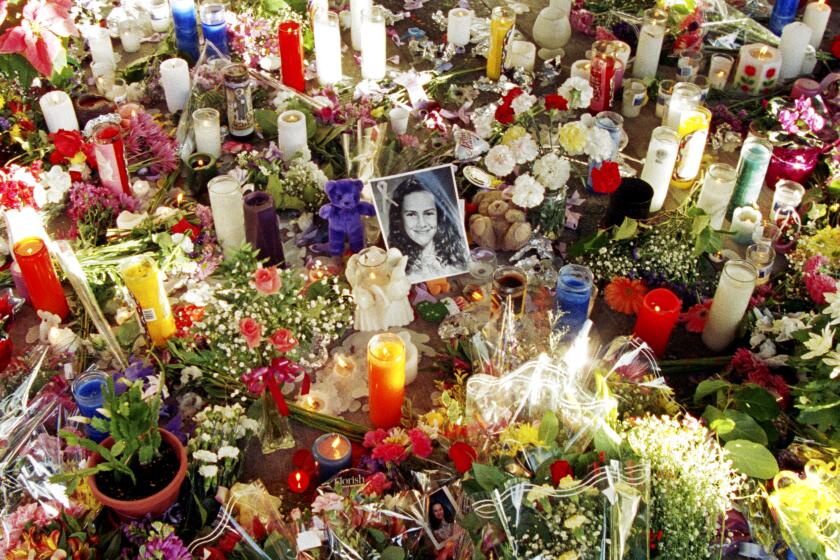From electric blue waves to eye-watering stink: What’s causing the coastal stench, when it will end

A pungent, fishy rancid odor has been wafting through the coastal air in Los Angeles this week, an unfortunate consequence of beautiful bioluminescent algae that has graced local beaches for a fortnight.
Southern California beaches have recently experienced a “red tide” bloom of microscopic algae known as dinoflagellate, which give the ocean a rusty brown hue during the day and an electric blue glow when agitated by waves or other movement at night.

But now this bioluminescent algae is dying and releasing hydrogen sulfide gas, which causes a rotten egg smell, explained Laura Rink, associate director at Heal the Bay Aquarium in Santa Monica. As bacteria feed on the decomposing algae, they consume oxygen, creating unbreathable patches of ocean known as dead zones, which can cause fish to die and worsen the smell, she said.
This week, residents in Venice, Santa Monica, Marina del Rey, Playa del Rey and Playa Vista have been pinching their noses at the unpleasant oceanic odor. Reports of the smell have stretched all the way into Mid-City.
“It smells like a rough combination of sewage and dead fish. We live half a block off the beach and the smell has completely filled the air today,” Venice resident Harrison Macks said Tuesday. “We’ve had our windows closed all day.”
Venice resident Lauren Hallett said she was taking her dog for a morning walk on the beach Sunday when she first noticed a fishy smell in the air.
“I did notice that the ocean was really red-brown last week, but I didn’t put it together that the smell was linked to the red tide,” she said. “It’s been intermittently smelling very fishy and stinky since then, especially when the wind is low.”
Santa Monica resident Maria Alzaga said she too was perplexed when she caught her first whiff of the “rotted food/garbage/sewage” odor on Sunday evening. It wasn’t until she voiced her concerns in a group chat that she was sent an article explaining a similar phenomenon that occurred following the 2020 bioluminescent bloom.
And on neighborhood social media platform Nextdoor, residents from all over West L.A. have been relieved to find an answer to the cause of the nauseating odor.
“Thank god I thought I was going crazy!” wrote one Venice resident, who lives more than a mile and a half from the beach. “I smelled it when I walked out my door and I’m by Penmar Park.”
Neither the bioluminescent algae nor the odor it produces are harmful, said Rink. However, if people are irritated by the smell, she recommends they stay away from the coastline this week.
“In a few days to a week, it should go back to normal,” she said. “Hopefully, all of the algae will have died off and the winds will sweep away any remaining smell.”
The bioluminescent bloom began about two weeks ago and has dazzled residents from San Diego to Malibu’s Point Mugu and several other beaches in between.

Scientists believe that algae use bioluminescence as a defense mechanism — to scare off hungry sea creatures or call attention to their location, which draws the predators’ predators. The microscopic algae have an extremely fast response to stimuli — such as breaking waves — and produce their glow 15 milliseconds after stimulation, researchers say.
The phenomenon is unpredictable; it can last for just a week or well over a month, be contained to a single beach or spread along miles of coastline, according to UC San Diego’s Scripps Institution of Oceanography. It is also fairly rare, typically only appearing in Southern California once a year or every couple of years.
As climate change warms waters, however, it is likely that local beaches will see more algae blooms of all types, said Rink.
Not all red tide algae blooms are bioluminescent, nor are they all innocuous, she said. Last summer, for example, a red tide bloom released a neurotoxin called domoic acid that sickened sea lions and other marine mammals along the California coast, including in Los Angeles.
In comparison to sea lions dying, the temporary stench is a small price to pay for the latest bloom, which dazzled beachgoers and nighttime surfers with its electric glow.
Times staff writer Grace Toohey contributed to this report.
More to Read
Sign up for Essential California
The most important California stories and recommendations in your inbox every morning.
You may occasionally receive promotional content from the Los Angeles Times.











